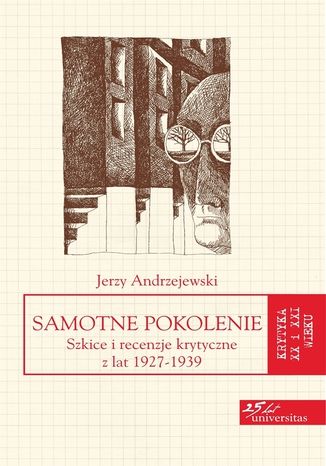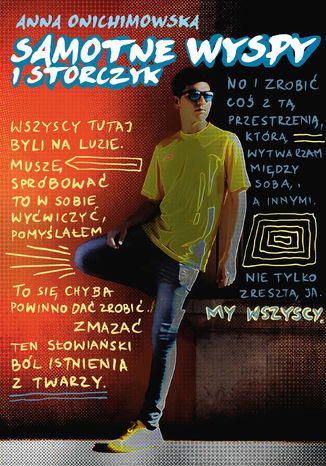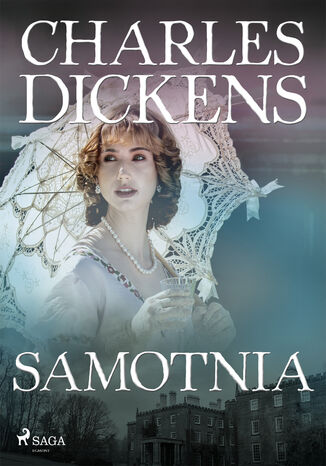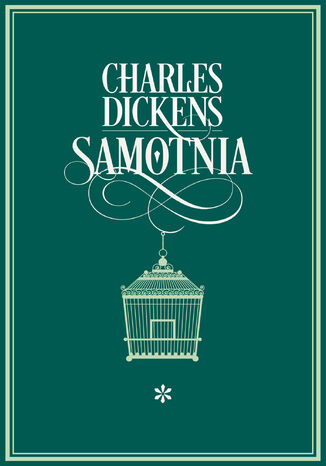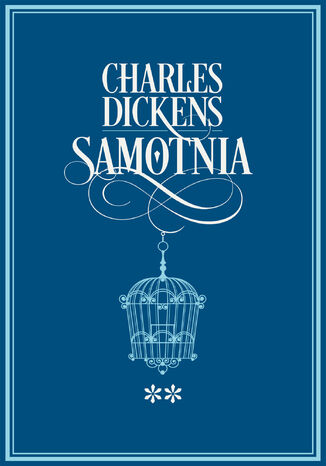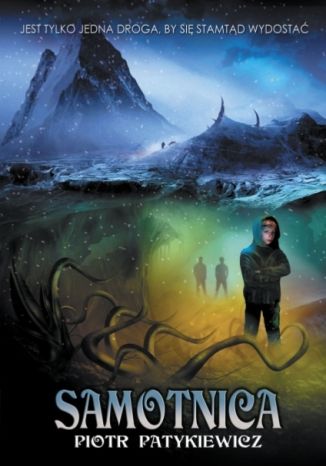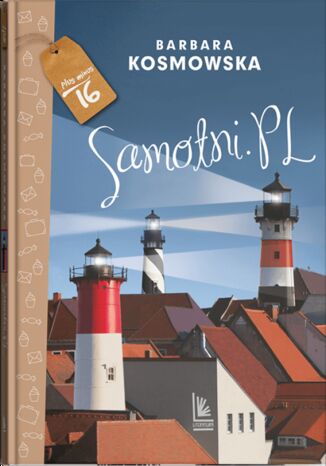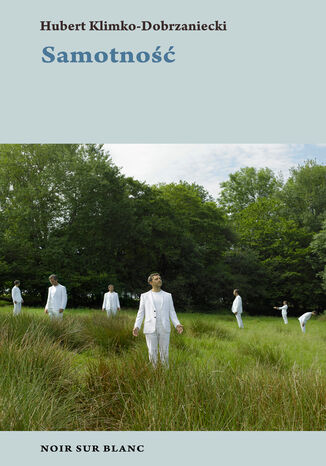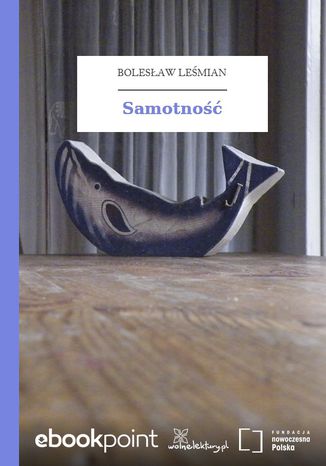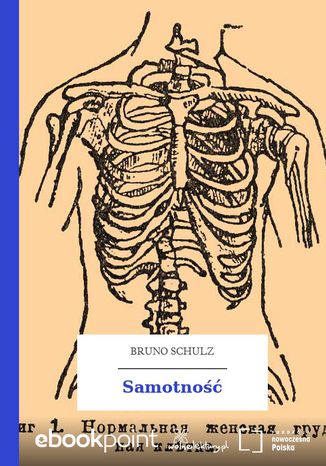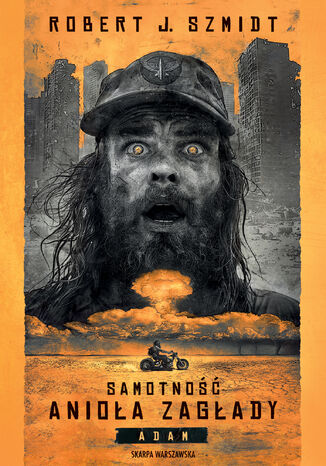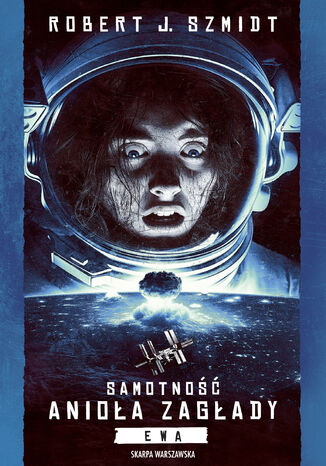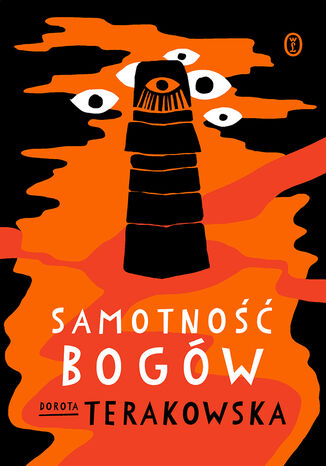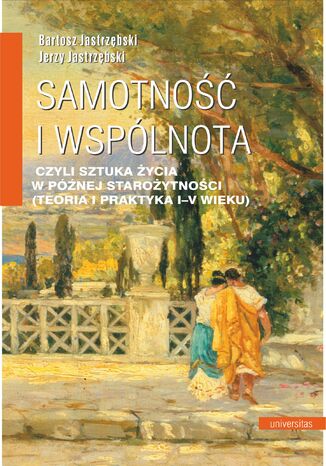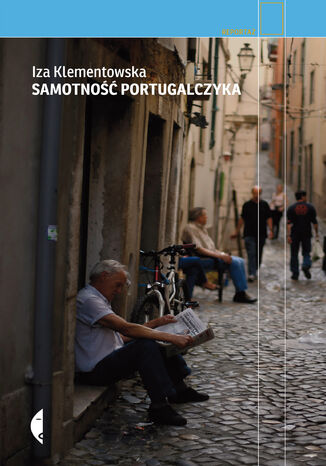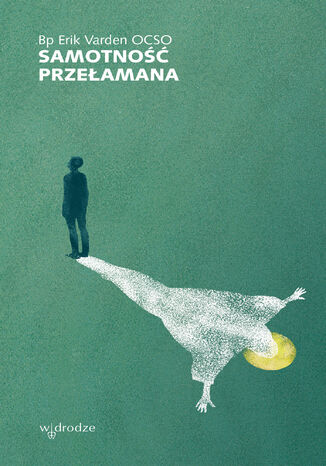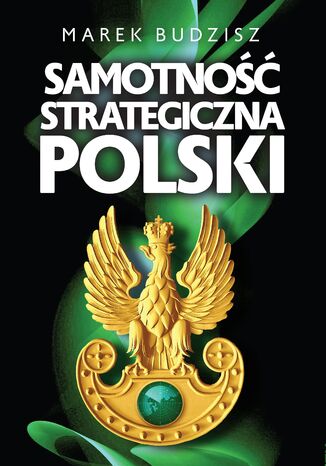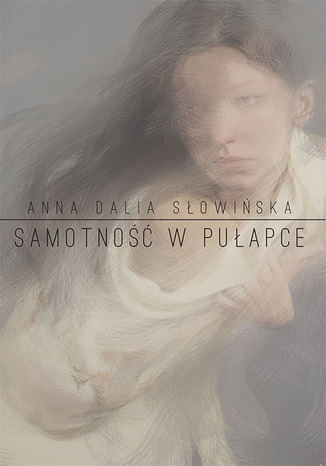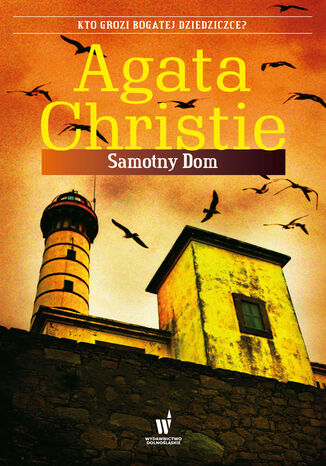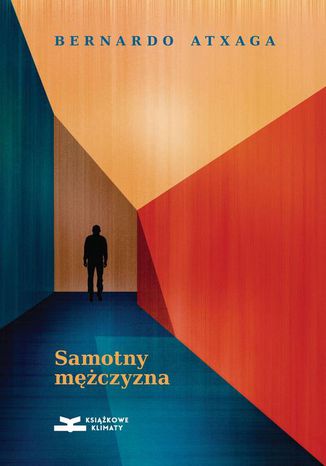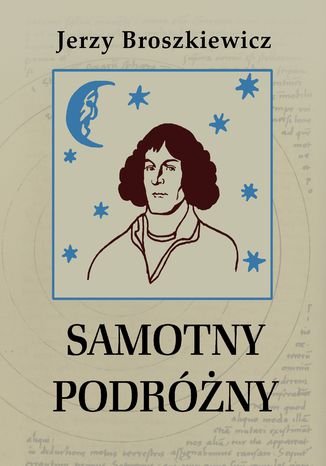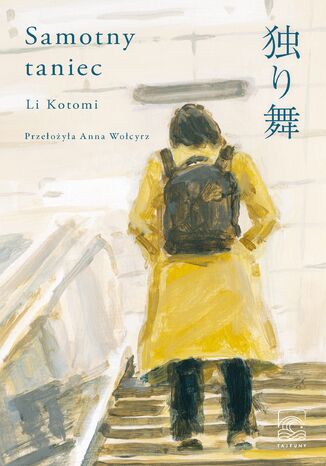Categories
-
- Bitcoin
- Businesswoman
- Coaching
- Controlling
- E-business
- Economy
- Finances
- Stocks and investments
- Personal competence
- Computer in the office
- Communication and negotiation
- Small company
- Marketing
- Motivation
- Multimedia trainings
- Real estate
- Persuasion and NLP
- Taxes
- Social policy
- Guides
- Presentations
- Leadership
- Public Relation
- Reports, analyses
- Secret
- Social Media
- Sales
- Start-up
- Your career
- Management
- Project management
- Human Resources
-
- Architektura i wnętrza
- Health and Safety
- Biznes i Ekonomia
- Home and garden
- E-business
- Ekonomia i finanse
- Esoterecism
- Finances
- Personal finance
- Business
- Photography
- Computer science
- HR & Payroll
- For women
- Computers, Excel
- Accounts
- Culture and literature
- Scientific and academic
- Environmental protection
- Opinion-forming
- Education
- Taxes
- Travelling
- Psychology
- Religion
- Agriculture
- Book and press market
- Transport and Spedition
- Healthand beauty
-
- Office applications
- Data bases
- Bioinformatics
- IT business
- CAD/CAM
- Digital Lifestyle
- DTP
- Electronics
- Digital photography
- Computer graphics
- Games
- Hacking
- Hardware
- IT w ekonomii
- Scientific software package
- School textbooks
- Computer basics
- Programming
- Mobile programming
- Internet servers
- Computer networks
- Start-up
- Operational systems
- Artificial intelligence
- Technology for children
- Webmastering
-
- Antology
- Ballade
- Biographies and autobiographies
- For adults
- Dramas
- Diaries, memoirs, letters
- Epic, epopee
- Essay
- Fantasy and science fiction
- Feuilletons
- Work of fiction
- Humour and satire
- Other
- Classical
- Crime fiction
- Non-fiction
- Fiction
- Mity i legendy
- Nobelists
- Novellas
- Moral
- Okultyzm i magia
- Short stories
- Memoirs
- Travelling
- Narrative poetry
- Poetry
- Politics
- Popular science
- Novel
- Historical novel
- Prose
- Adventure
- Journalism, publicism
- Reportage novels
- Romans i literatura obyczajowa
- Sensational
- Thriller, Horror
- Interviews and memoirs
-
- Archeology
- Bibliotekoznawstwo
- Cinema studies
- Philology
- Polish philology
- Philosophy
- Finanse i bankowość
- Geography
- Economy
- Trade. World economy
- History and archeology
- History of art and architecture
- Cultural studies
- Linguistics
- Literary studies
- Logistics
- Maths
- Medicine
- Humanities
- Pedagogy
- Educational aids
- Popular science
- Other
- Psychology
- Sociology
- Theatre studies
- Theology
- Economic theories and teachings
- Transport i spedycja
- Physical education
- Zarządzanie i marketing
-
- Health and Safety
- History
- Road Code. Driving license
- Law studies
- Healthcare
- General. Compendium of knowledge
- Academic textbooks
- Other
- Construction and local law
- Civil law
- Financial law
- Economic law
- Economic and trade law
- Criminal law
- Criminal law. Criminal offenses. Criminology
- International law
- International law
- Health care law
- Educational law
- Tax law
- Labor and social security law
- Public, constitutional and administrative law
- Family and Guardianship Code
- agricultural law
- Social law, labour law
- European Union law
- Industry
- Agricultural and environmental
- Dictionaries and encyclopedia
- Public procurement
- Management
-
- Africa
- Albums
- Southern America
- North and Central America
- Australia, New Zealand, Oceania
- Austria
- Asia
- Balkans
- Middle East
- Bulgary
- China
- Croatia
- The Czech Republic
- Denmark
- Egipt
- Estonia
- Europe
- France
- Mountains
- Greece
- Spain
- Holand
- Iceland
- Lithuania
- Latvia
- Mapy, Plany miast, Atlasy
- Mini travel guides
- Germany
- Norway
- Active travelling
- Poland
- Portugal
- Other
- Przewodniki po hotelach i restauracjach
- Russia
- Romania
- Slovakia
- Slovenia
- Switzerland
- Sweden
- World
- Turkey
- Ukraine
- Hungary
- Great Britain
- Italy
-
- Philosophy of life
- Kompetencje psychospołeczne
- Interpersonal communication
- Mindfulness
- General
- Persuasion and NLP
- Academic psychology
- Psychology of soul and mind
- Work psychology
- Relacje i związki
- Parenting and children psychology
- Problem solving
- Intellectual growth
- Secret
- Sexapeal
- Seduction
- Appearance and image
- Philosophy of life
-
- Bitcoin
- Businesswoman
- Coaching
- Controlling
- E-business
- Economy
- Finances
- Stocks and investments
- Personal competence
- Communication and negotiation
- Small company
- Marketing
- Motivation
- Real estate
- Persuasion and NLP
- Taxes
- Social policy
- Guides
- Presentations
- Leadership
- Public Relation
- Secret
- Social Media
- Sales
- Start-up
- Your career
- Management
- Project management
- Human Resources
-
- Antology
- Ballade
- Biographies and autobiographies
- For adults
- Dramas
- Diaries, memoirs, letters
- Epic, epopee
- Essay
- Fantasy and science fiction
- Feuilletons
- Work of fiction
- Humour and satire
- Other
- Classical
- Crime fiction
- Non-fiction
- Fiction
- Mity i legendy
- Nobelists
- Novellas
- Moral
- Okultyzm i magia
- Short stories
- Memoirs
- Travelling
- Poetry
- Politics
- Popular science
- Novel
- Historical novel
- Prose
- Adventure
- Journalism, publicism
- Reportage novels
- Romans i literatura obyczajowa
- Sensational
- Thriller, Horror
- Interviews and memoirs
-
- Philosophy of life
- Interpersonal communication
- Mindfulness
- General
- Persuasion and NLP
- Academic psychology
- Psychology of soul and mind
- Work psychology
- Relacje i związki
- Parenting and children psychology
- Problem solving
- Intellectual growth
- Secret
- Sexapeal
- Seduction
- Appearance and image
- Philosophy of life
Misternie skonstruowana, inspirowana poezją Kobayashiego Issy opowieść o metamorfozie Rose, młodej francuskiej botaniczki. Wędrując po Kioto śladami swojego zmarłego ojca, japońskiego marszanda, pozna jego testament na końcu starannie zaplanowanej trasy prowadzącej przez ogrody, świątynie, herbaciarnie. W otoczeniu kwiatów, drzew, kamieni, poezji Rilkego i miejscowych legend oraz przyjaciół i współpracowników ojca Rose stopniowo odkrywa miłość i zaczyna akceptować japońską część swojej tożsamości. Powieść jakich mało. Piękna, delikatna, inteligentna. LE FIGARO LITTÉRAIRE Doskonałą harmonię japońskiego stylu życia można odczuć nawet w warstwie słownej powieści: rozdziały następują po sobie w niespiesznym rytmie, jak kolejne rytuały ceremonii parzenia herbaty. FRANCE INFO CULTURE Oda do Japonii Wspaniała, nezyjnie skomponowana powieść. LE MONDE
Samotne pokolenie. Szkice i recenzje krytyczne z lat 1927-1939
KRYTYKA XX i XXI WIEKU. Tom 25 Samotne pokolenie jest wyborem szkiców i recenzji Jerzego Andrzejewskiego z lat 1927-1939. W tomie znalazły się najważniejsze teksty krytyczne, a także liczne, nieznane dotąd szerzej eseje, artykuły i noty Andrzejewskiego, publikowane głównie w dzienniku „ABC” oraz w tygodniku „Prosto z mostu”. Powstała w ten sposób całość stanowi pierwszy tak reprezentatywny przegląd przedwojennej krytyki literackiej autora Ładu serca. Podejmował on w niej próby rekonstrukcji sytuacji duchowej młodego pokolenia, pisał o współczesnej sobie prozie polskiej, francuskiej oraz angielskiej, interesował się debiutami swoich rówieśników: Gombrowicza, Rudnickiego, Brezy, fascynował go Conrad i Mauriac, podziwiał Nałkowską oraz Iwaszkiewicza. Stworzył fascynującą panoramę literatury dwudziestolecia międzywojennego.
Bohaterem tej powieści jest 18-letni Maciek. Chłopak przeżywa pierwsze uczucia, ma kłopoty w domu (rodzice są rozwiedzeni, Maciek mieszka z matką, która spodziewa się kolejnego dziecka), marzy o tym, żeby być malarzem i zdaje na ASP. Maciek i jego przyjaciele na co dzień muszą podejmować decyzje: małe, większe, wreszcie takie, które zaważą na całym ich przyszłym życiu... Losy Maćka, Ewy, Grubego i innych młodych bohaterów przedstawione są czterech kolejnych tomach: „Samotne wyspy i storczyk”, „Żegnaj na zawsze”, „Trudne powroty” i „Bliscy nieznajomi”. Niniejszy e-book jest pierwszym z nich. MROWKA (GRANICE.PL): Mimo że historię o Maćku wydała Nasza Księgarnia, znajdą się tu treści nieprzeznaczone dla młodszych nastolatków. „Samotne wyspy i storczyk” to pozycja, która z pewnością zyska aprobatę młodzieży. Podejrzewam nawet, że zostanie przyjęta z euforią. Głównym wątkiem powieści jest mianowicie seks. Seks z często przypadkowymi partnerkami, stanowiący podstawę egzystencji. Maciek nie dostaje się na ASP. Jego matka, kobieta wyzwolona, nie interesuje się przesadnie życiem chłopaka, zresztą nie ma na to ochoty, bo zachodzi w ciążę z facetem, którego nie chce znać. Ojciec Maćka we Włoszech ma nową rodzinę: zaproszony do niego na wakacje bohater będzie miał szansę poznać swoją przyrodnią siostrę. Maciek traktuje dziewczyny przedmiotowo – prawie każdą ciągnie do łóżka. Pierwszą, która mu odmawia, jest Ewa, siostra przyjaciela. Cała historia „Samotnych wysp” daje się sprowadzić do tematu zdobywania Ewki. Inne wątki – choć intrygujące i ważne – są tylko tłem dla przygód „miłosnych” Maćka, spycha je autorka na margines. Znalazła Onichimowska lukę w literaturze młodzieżowej. Podjęła się przedstawienia motywu, który dotąd istniał jedynie na łamach kolorowych czasopism. Jeśli prześledzić powieści dla młodych ludzi, okaże się, że seks istniał w nich w zakresie mocno ograniczonym – wyrzucany z partii narracyjnych pojawiał się przede wszystkim sygnalizowany przez ciąże – niechciane konsekwencje młodzieńczych wyskoków, kary dla zbyt swawolnych nastolatków. U Onichimowskiej inaczej: seks nie bywa przemilczany, Maciek-narrator nie waha się przedstawiać najbardziej intymnych chwil. Nie są to opisy pornograficzne, raczej próby zachęcania odbiorców do zakosztowania tego rodzaju rozkoszy. Trochę w tym perwersji, trochę podniecenia i sporo ryzyka – ryzyka, bo u Onichimowskiej seks nie wiąże się z żadnymi konsekwencjami, jest jednocześnie środkiem i celem, nadaje życiu sens. Prezentowany w sposób atrakcyjny dla odbiorców (teoretycznie dla odbiorczyń, ale skoro faceci sięgali po Musierowicz, tym bardziej przekonać się mogą do Onichimowskiej), nie prowadzi czytelników do refleksji na temat sedna międzyludzkich związków. W tym punkcie nie różni się autorka od kolorowych magazynów – a szkoda. Upatruje sukcesu raczej w sensacyjnym i prekursorskim podejściu do tematu, który długo był w młodzieżowej literaturze tematem tabu. Pisze znakomicie i powieść jej naprawdę wciąga – tyle że brak „ponadcielesnego” przekazu dostrzegą jedynie starsi, raczej przypadkowi czytelnicy. Młodzi odbiorcy wpadną w bezkrytyczny zachwyt i nie zwrócą uwagi na pewną prowokacyjną (medialną) przesadę. Przydałoby się od książki wymagać czegoś więcej. A może się mylę? Ta autorka nie oszukuje i nie przemilcza faktów. Stara się zainteresować młodzież i z powodzeniem może konkurować z innymi, bardziej ostrożnymi, twórcami literatury dla nastolatków. Onichimowska nie pomija i innych zagadnień. Nasyca powieść problemami i rozterkami, pokazuje swojego bohatera w wielu konfliktowych i dramatycznych sytuacjach, skłania się ku wielopłaszczyznowym, złożonym charakterystykom. Mimo pewnych zastrzeżeń jest powieść Onichimowskiej książką znakomitą i podejrzenie poczytności serii staje się po jej lekturze niemal przekonaniem. „Samotne wyspy i storczyk” to powieść, która musi się spodobać młodym odbiorcom. Zamiast ckliwych i sentymentalnych opowiastek otrzymują oni mięsistą, piękną literacko i niebanalną fabularnie opowieść. Onichimowska przełamała pewne kanony pisania dla młodzieży i prawdopodobnie szybko doczeka się następców. Ale tą książką wyrobi sobie autorka na pewno grono wiernych czytelników (jeśli ktoś jeszcze nie zna jej z poprzednich tomów!), ma szansę stać się „kultową” pisarką młodych, godną swoich czasów następczynią Siesickiej. Projekt okładki: Olga Bołdok
Powieść posiada opinię szczytowego osiągnięcia Charlesa Dickensa. Dzięki nowatorskiej jak na owe czasy podwójnej narracji historię poznajemy z perspektywy Esther Summerson - niepewnej siebie sieroty, oraz wyniosłej i bajecznie bogatej Lady Dedlock. Losy kobiet przecinają się, gdy obie biorą udział w sądowym procesie spadkowym. Sprawa ciągnie się latami, komplikuje życia kolejnych osób, a na horyzoncie nie pojawia się żaden finał. Tylko adwokaci i sędziowie zacierają ręce.
Wielu wśród nich Vladimir Nabokov i G.K. Chesterton określa Samotnię najlepszą i najbardziej dojrzałą powieścią Charlesa Dickensa, a Stephen King zalicza ją do swoich dziesięciu ulubionych książek. Przede wszystkim jest to oparta na prawdziwych sądowniczych przypadkach historia o bezwzględnym działaniu absurdalnego brytyjskiego prawa, na pierwszy plan wysuwają się w niej jednak kobiece losy. Wprowadzenie rozdziałów pisanych z perspektywy Esther Summerson, sieroty z nizin społecznych, jest niezwykle nowatorskim chwytem w wiktoriańskiej prozie. Zarówno wyjątkowa konstrukcja jak i społeczno-prawnicza tematyka czynią tę powieść zaskakująco współczesną. Doczekała się wielu adaptacji scenicznych, radiowych oraz telewizyjnych, i wciąż zyskuje uznanie czytelników.
W drugim tomie satyry na brytyjski system sądowniczy klasyczna powieść nabiera detektywistycznego charakteru. Dickens prowadzi czytelnika tropem morderstwa, podsuwa fałszywe wskazówki i ukryte przesłanki, przez co Samotnia staje się prekursorem współczesnych kryminałów. Zarówno ta wyjątkowa konstrukcja, jak i nowoczesny detektywistyczny wątek sprawiają, że Samotnia cieszy się niesłabnącym zainteresowaniem współczesnych czytelników, którzy z przejęciem wyczekują wielkiego finału kilkudziesięcioletniego procesu Jarndyce przeciw Jarndyce. Pierwsze filmowe adaptacje Samotni sięgają aż 1920 roku, kiedy Maurice Elvey wyreżyserował czarno-biały, niemy film Bleak House. Później BBC wyprodukowało aż trzy seriale na podstawie tej powieści Dickensa w 1959, 1985 i 2005 roku. W najnowszym, nagrodzonym Peabody Award, wystąpiły m.in. Gillian Anderson i Carey Mulligan.
Trzej koledzy - Szufla, Pawian i Karoten - w czasie ferii zimowych nudzą się przy trzepaku, narzekając na bezśnieżną zimę. Od przechodzącego przez podwórko zbieracza złomu dostają szamański bębenek i wtedy okazuje się, że jeden z nich ma niezwykłe umiejętności posługiwania się tym instrumentem. Transowy rytm bębenka przenosi chłopców do skutej lodem, śnieżnej i mroźnej krainy, gdzie będą musieli sobie radzić z surową przyrodą, przystosować się do sposobu życia i zwyczajów nieprzyjaźnie nastawionego do obcych miejscowego plemienia, nauczyć się porozumiewać z istotami, których wcześniej sobie nawet nie wyobrażali, oraz podjąć trud wydostania się z tego świata, co jednak może nastąpić dopiero po złożeniu ofiary legendarnej górze - Samotnicy. Pasjonująca książka fatastyczno-przygodowa!
Joanny trudno nie zauważyć burza rudych włosów, fioletowy szalik i wojskowe spodnie robią swoje. Kto by przypuszczał, że obok kolekcji rockowych płyt dziewczyna skrywa pudełko z nigdy niewysłanymi listami do mamy? Znak rozpoznawczy Wiktora to znoszony angielski sweter, jedyna pamiątka po matce, która wyjechała za granicę w poszukiwaniu szczęścia. Co może wyniknąć z przypadkowego spotkania tych dwojga młodych ludzi, których łączy tylko lub aż tęsknota za najbliższymi? Czy Wiktor odważy się kraść, żeby zdobyć pieniądze dla chorej babci, z którą mieszka? I czy samotność to choroba, którą da się leczyć? Barbara Kosmowska pisze o sprawach smutnych i trudnych z wielką pogodą ducha i optymizmem.
Bruno Stressmeyer nie lubi ludzi, psów, miasta, w którym mieszka, i władz, które nim rządzą. Nie lubi być zdrowy, choć o zdrowie skrupulatnie dba. Nie musi i nie chce pracować. O nikogo nie musi i nie chce się troszczyć. Nie cierpi swojego brata, cierpi jednak z powodu jego kontrowersyjnej decyzji. Jest przekonany, że samotność to jedyny stan, który mu odpowiada. Doprawdy?
Bolesław Leśmian Napój cienisty Samotność Wiatr wie, jak trzeba nacichać Za oknem mrok się kołysze. Nie widać świata, nie słychać, Lecz ja coś widzę i słyszę Ktoś z płaczem ku mnie z dna losu Bezradną wyciąga rękę! Nie znam obcego mi głosu, Ale znam dobrze tę mękę! Zaklina, błaga i woła, Więc w mrok wybiegam na drogę I, ... Bolesław Leśmian Ur. 22 stycznia 1878 r. w Warszawie Zm. 7 listopada 1937 r. w Warszawie Najważniejsze dzieła: zbiory wierszy: Sad rozstajny (1912), Łąka (1920), Napój cienisty (1936), Dziejba leśna (1938); zbiory baśni prozą: Klechdy sezamowe (1913), Przygody Sindbada Żeglarza (1913) i Klechdy polskie Wybitny polski poeta, eseista, prozaik i tłumacz tworzący w Młodej Polsce i dwudziestoleciu międzywojennym. Pochodził ze spolszczonej inteligenckiej rodziny Lesmanów. Spokrewniony z A. Langem i J. Brzechwą. Ukończył studia prawnicze w Kijowie. Współtworzył Chimerę i Teatr Artystyczny w Warszawie. Jego poezję cechował symbolizm, sensualizm, mistycyzm, spirytyzm, zainteresowanie paranormalnością, postulowanie powrotu do natury (poeta jako człowiek pierwotny), poszukiwanie miejsca Boga w świecie, ale i egzystencjalne spory ze stwórcą. Nawiązywał do ludowości (tworząc neologizmy oraz własne mity i postaci), stylistycznie do baroku i romantyzmu, ideowo do filozofii Nietzschego i Bergsona. Mistrz wiersza sylabotonicznego. W 1933 r. został członkiem Polskiej Akademii Literatury. autor: Alicja Szulkowska Kupując książkę wspierasz fundację Nowoczesna Polska, która propaguje ideę wolnej kultury. Wolne Lektury to biblioteka internetowa, rozwijana pod patronatem Ministerstwa Edukacji Narodowej. W jej zbiorach znajduje się kilka tysięcy utworów, w tym wiele lektur szkolnych zalecanych do użytku przez MEN, które trafiły już do domeny publicznej. Wszystkie dzieła są odpowiednio opracowane - opatrzone przypisami oraz motywami.
Bruno Schulz Sanatorium Pod Klepsydrą Samotność Od kiedy mogę wychodzić na miasto, jest to dla mnie znaczną ulgą. Ale jakże długo nie opuszczałem mego pokoju! Były to gorzkie miesiące i lata. Nie potrafię wytłumaczyć faktu, że jest to dawny mój pokój z dzieciństwa, ostatnia izba od ganku, już za owych czasów rzadko odwiedzana, wciąż zapominana, jakby nie należąca do mieszkania. Nie pamiętam już, jak tam zaszedłem. Zdaje mi się, że była noc jasna, wodnistobiała noc b... Bruno Schulz Ur. 12 lipca 1892 w Drohobyczu Zm. 19 listopada 1942 tamże Najważniejsze dzieła: Xięga bałwochwalcza (grafiki, 1920-1922), Sklepy cynamonowe (opowiadania, 1934), Sanatorium pod Klepsydrą (opowiadania, 1937) Prozaik i artysta-plastyk. Pochodził ze zasymilowanej rodziny żydowskiej. Studiował architekturę na Uniwersytecie Lwowskim, lecz nie ukończył jej z powodów zdrowotnych. W czasie I Wojny Światowej przez pewien czas uczęszczał do Akademii Sztuk Pięknych w Wiedniu. Później pracował w rodzinnym Drohobyczu jako nauczyciel. Schulz debiutował dzięki zainteresowaniu, jakie wobec jego prozy i osoby żywiła Zofia Nałkowska. W ogóle jego proza fascynowała innych pisarzy, takich jak Witkacy czy Gombrowicz. Po wojnie promotorami jego twórczości byli Artur Sandauer i Jerzy Ficowski. Zarówno proza, jak i prace plastyczne Schulza ujawniają tendencję do przekształcania rzeczywistości w mit bądź w wizję rodem ze snu, jak również silną fascynację erotyką o zabarwieniu masochistycznym. Groteskowy obraz świata sprzyjał przy tym okazjonalnym przebłyskom poczucia humoru. Najbardziej charakterystyczną cechą pisarstwa Schulza jest jednak język - gęsty, metaforyczny i poetycki. Schulz zginął w Drohobyczu podczas wojny, zastrzelony przez Niemca. Zaginął też wówczas rękopis jego niedokończonej powieści, zatytułowanej Mesjasz. W 2001 odnaleziono w Drohobyczu wykonane przez Schulza freski, przeniesione do Jerozolimy przez instytut Yad Vashem. Kupując książkę wspierasz fundację Nowoczesna Polska, która propaguje ideę wolnej kultury. Wolne Lektury to biblioteka internetowa, rozwijana pod patronatem Ministerstwa Edukacji Narodowej. W jej zbiorach znajduje się kilka tysięcy utworów, w tym wiele lektur szkolnych zalecanych do użytku przez MEN, które trafiły już do domeny publicznej. Wszystkie dzieła są odpowiednio opracowane - opatrzone przypisami oraz motywami.
Samotność Anioła Zagłady. Adam. Samotność Anioła Zagłady. Tom 1
Adam Sawyer to Anioł Zagłady, żołnierz, którego zadaniem, w razie wybuchu wojny, jest odpalenie arsenału nuklearnego USA. Adam Sawyer to także wybraniec, jeden z nielicznych, którzy taką wojnę przeżyją dzięki programowi "Arka" pozwalającemu na odbudowanie życia na wyjałowionej głowicami trineutronowymi Ziemi. Okrutny los sprawia jednak, że Adam zostaje wybudzony ze snu kriogenicznego. Jedyną szansa na przetrwanie jest dotarcie do znajdującego się po przeciwległej stronie kontynentu centrum "Arki". Samotna podróż przez wyludnione Stany Zjednoczone to zarazem wyprawa w głąb siebie, a zarazem nieustanna walka z nieubłaganymi siłami natury i najskrytszymi lękami. Na końcu tej drogi czeka prawda po stokroć gorsza od wszystkiego, z czym zetknął się człowiek. Czy Adam zdoła ją udźwignąć?
Niedaleka przyszłość. Załoga Międzynarodowej Stacji Kosmicznej obserwuje z orbity wybuch i przebieg - niesprowokowanej, jak się zdaje - totalnej wojny nuklearnej, która doprowadza do unicestwienia życia na Ziemi. Cudem ocalali astronauci muszą nie tylko odnaleźć się w nowej przerażającej rzeczywistości, ale też obmyślić sposób na wyjście ze śmiertelnej pułapki, w jaką z wolna zmienia się stacja krążąca nad martwą planetą. W bezwzględnej walce na śmierć i życie wrogiem Anny Hammond i jej pięcioosobowej załogi będą przeciwności losu i pustka, w miarę upływu czasu jednak do głosu zaczną też dochodzić o wiele groźniejsze, wewnętrzne demony. Kto z tej szóstki zdoła przetrwać, komu nie będzie to dane? I najważniejsze z pytań: czy tam, w dole, nie trafią do jeszcze gorszego piekła?
Historia o samotności, wierze i nieuchronności zmian. Przodkowie Jona bali się świata. Pragnęli obecności kogoś, kto byłby potężniejszy niż żywioły i przyroda. Powoływali więc do życia różne nadprzyrodzone istoty, ale one nie dawały im oparcia. W końcu z ludzkiej potrzeby narodził się Światowid. Szybko urósł w siłę i stał się okrutny. Teraz plemię Jona przyjęło wiarę w Boga Dobroci, odsuwając się od starych bóstw. Oddzielają je od nich rzeka, puszcza i Tabu. Mały Jon przekracza zakazaną granicę i dociera do opuszczonego Światowida. Czego bóg zażąda od Jona? Dokąd zawiedzie go Kamienna Droga? Książka wyróżniona przez Polską Sekcję IBBY, rekomendowana przez jury do Paszportu Polityki i nominowana do nagrody pisarzy fantasy Srebrny Glob. Dorota Terakowska pisze książki czytane zarówno przez dzieci i młodzież, jak i przez dorosłych. Młodsi czytelnicy kochają ich magiczną atmosferę, starsi doceniają pracę, jaką włożyła autorka w wymyślenie własnej wersji literatury. Przemysław Czapliński Samotność Bogów Terakowskiej jest książką piękną, napisaną swobodnie, językiem czystym, dość misternie skomponowaną, przywodzącą na myśl Tolkiena Mądrą, uczącą miłości do życia zwyczajnego i otwartości na niezwykłość. Piotr Śliwiński, Megaron
Samotność i wspólnota, czyli sztuka życia w późnej starożytności (teoria i praktyka I-V wieku)
Bartosz Jastrzębski, Jerzy Jastrzębski
Książka niniejsza traktuje o zjawiskach i problemach epoki narodzin i początków chrześcijańskiej cywilizacji Zachodu. Był to bowiem czas niezmiernie ciekawy: chrystianizm istniał wtedy jeszcze w postaci płynnej, nieustalonej, zmieszanej, wielorakiej, szukającej dopiero form wyrazu, kształtującej rytuały, budującej instytucje – a równocześnie krzepnącej w nieustannych sporach, polemikach i dyskusjach ze swoim (większościowym) pogańskim otoczeniem. Zagadnień i wątków, które w związku z tym można rozważać jest, rzecz jasna, bezlik. Przyjęliśmy jednak taką perspektywę badawczą, iż streszczają się one w kilku fundamentalnych pytaniach: jak żyć, by być szczęśliwym? By uniknąć pozornie (?) nieuchronnych cierpień? Jaką postawę zająć wobec trosk, nieszczęść i utrapień, których pełne jest przecież każde ludzkie istnienie? Czy można się od nich jakoś uwolnić lub nauczyć się je znosić? Dlatego to postanowiliśmy prześledzić główne idee manifestującego się w chrześcijańskich, pustynnych eremach i cenobiach „ducha czasu” – wyrażającego się w skrajnym ubóstwie, najsurowszych praktykach ascetycznych, podejmowanych gwoli całkowitego oddania się Bogu – z oglądem świata współczesnych im twórców pogańskich. Pytając starożytnych o „recepty” na dobre życie, narzuciły się nam następujące kwestie: jakie były, są lub mogą być relacje między jednostką, a wspólnotą? Co jest pierwsze? Skoro przyjmiemy, że człowiek jest od początku ukierunkowany do bycia z innymi i dla innych, to dlaczego tak wielu decydowało się na życie samotnicze, na ucieczkę od ludzi, zerwanie nawet najściślejszych więzów przyjacielskich i rodzinnych? W imię czego? – lub Kogo? Jakie doświadczenia rekompensowały chrześcijańskim anachoretom i filozofom pogańskim wyzucie się ze wszystkiego i opuszczenie wszystkich, nawet dotąd bliskich i drogich? Czy jesteśmy w stanie takie przeżycia i motywy decyzji jakoś przywołać, mocą empatii i wyobraźni odtworzyć w sobie, zrozumieć, i w końcu opisać w sposób komunikatywny dla współczesnego człowieka?
Kto rządził w domu António de Oliveiry Salazara, dlaczego Joao Soares został tylko w piżamie, co słychać wewnątrz fortu w Caxias, kogo Eryk zabiera ze sobą do Angoli, dlaczego Kinkas spędzał całe dnie na cmentarzu, a dom Rui przypominał pomnik? Losy Portugalczyków to tylko pretekst, by się przyjrzeć świadomemu lub nie, chcianemu lub nie, warunkowemu lub nie odosobnieniu. To nie Portugalia pięknych wybrzeży i fado, lecz Portugalia podsłuchów, cieni na ścianie, niepewności i niespełnionych obietnic. To Portugalia okrojona z terytorium i dumy.
Ta książka jest pocieszeniem i zapewnieniem, że życie ludzkie, wbrew temu, co często słyszymy, nie oznacza: jesteś skazany na samotność. Przeciwnie, chrześcijaństwo to droga powrotu do komunii z Tym, który pamięta o nas od zawsze i nieustannie i nie godzi się na naszą samotność. Erik Varden OCSO z wielką erudycją, a jednocześnie z delikatnością, analizuje kondycję człowieka, w centrum stawiając pamiętanie. Przywołuje historie z Biblii, by uzmysłowić nam, że celem ludzkich zmagań jest niebo i że nie jesteśmy na naszej drodze sami.
Samotność strategiczna nie oznacza braku wiary w system sojuszniczy, w którym uczestniczy Polska. Państwa o naszym potencjale, muszą kształtować samodzielnie otaczającą nas przestrzeń, w tym przede wszystkim w zakresie bezpieczeństwa. Musimy stabilizować sytuację zgodnie z polskim, strategicznym planem wielkiej gry. Czy to oznacza porzucenie sojuszników? Wręcz przeciwnie. Samotność strategiczną należy rozumieć raczej jako konieczność przeprowadzenia własnego, polskiego rachunku strategicznego. Rachunek ten trzeba prowadzić w samotności, wychodząc z założenia, że nie wszystkie nasze interesy pokrywają się z interesami naszych sprzymierzeńców. Nikt przy zdrowych zmysłach nie może proponować rozluźnienia więzów z NATO, Stanami Zjednoczonymi czy Unią Europejską, ale równie nieroztropne jest oczekiwanie, że inni rozwiążą za nas nasze dylematy strategiczne. Nasz układ sojuszniczy ewoluuje, zmieniają się oceny sytuacji i znaczenie poszczególnych państw. Nawet jeśli wszyscy maszerujemy w jednym kierunku, to nie w tym samym tempie. Nawet zakładając, że Paryż czy Berlin bez wahania i zbędnej zwłoki postanowią wywiązać się z przyjętych zobowiązań sojuszniczych, to pojawia się kwestia ich zdolności. Z wojskowego punktu widzenia będziemy zdani jedynie na siebie, naszych sojuszników regionalnych i na Stany Zjednoczone. WOJNĘ BĘDZIEMY MUSIELI PRZEZ DŁUGI CZAS TOCZYĆ W SAMOTNOŚCI.
Samotność twoją i twoje zachody
Jerzy Liebert Kołysanka jodłowa Samotność twoją i twoje zachody Jan Kochanowski Samotność twoją i twoje zachody Sądzi Pan jeden smutku i nagrody Nim serce naciesz! U niego droga twa z tej się nie wraca U niego dzień nasz powszedni i praca Orężem, pacierz. Nie umiesz władać nim i ja nie władam Ale za t... Jerzy Liebert Ur. ur. 24 lipca 1904 w Częstochowie Zm. zm. 19 czerwca 1931 w Warszawie Najważniejsze dzieła: tomiki poezji Druga ojczyzna (1925), Gusła (1930), Kołysanka jodłowa (1932); zbiór korespondencji Listy do Agnieszki Poezja Lieberta stanowi zapis jego poszukiwań metafizycznych. Tematyka religijno-filozoficzna przejawia się już w debiutanckim wierszu Zmartwychwstanie. Modlitwa młodego poety, opublikowanym w chrześcijańskim Czynie. Związany ze środowiskiem Skamandrytów, przyjaźnił się Liebert z Jarosławem Iwaszkiewiczem, publikował w Skamandrze i Wiadomościach literackich. Ważną relacją była dla poety przyjaźń z Bronisławą Wajngold, która przyjęła chrzest jako Agnieszka, a następnie wstąpiła do zakonu franciszkanek. Za jej przyczyną Liebert znalazł się w kręgu inteligencji katolickiej, związanym z ośrodkiem zakonnym w podwarszawskich Laskach, czytał filozofów chrześcijańskich i brał udział w dyskusjach na temat tych lektur. Dziennikiem tych przeżyć są Listy do Agnieszki. Studiował polonistykę na Wydziale Filozofii Uniwersytetu Warszawskiego, ale ukończenie studiów uniemożliwiła mu gruźlica i kłopoty materialne. Dzięki wsparciu przyjaciół wyjeżdżał na kuracje do Worochty. Zmarł w Warszawie w wieku 27 lat. Kupując książkę wspierasz fundację Nowoczesna Polska, która propaguje ideę wolnej kultury. Wolne Lektury to biblioteka internetowa, rozwijana pod patronatem Ministerstwa Edukacji Narodowej. W jej zbiorach znajduje się kilka tysięcy utworów, w tym wiele lektur szkolnych zalecanych do użytku przez MEN, które trafiły już do domeny publicznej. Wszystkie dzieła są odpowiednio opracowane - opatrzone przypisami oraz motywami.
„Samotność w pułapce,” to wciągająca, pełna emocji powieść z sensacyjnym wątkiem, nie pozbawiona różnorodności tematów i poruszanych problemów, także o wydźwięku moralno – egzystencjonalnym. Mamy tu niezwykle ciepłe, znakomicie zarysowane portrety bohaterów – policjanta na emeryturze, dziewczynę, która straciła pamięć na skutek traumatycznych przeżyć i innych bohaterów, którzy to dzielą z czytelnikami typowe ludzkie wątpliwości i wahania. Akcja powieści rozgrywa się współcześnie we Wrocławiu i Bremie. Już od pierwszych stron książki poznajemy charaktery bohaterów, głębię ich przemyśleń, spojrzenie na siebie i otoczenie, obserwujemy, jak ewoluuje ich osobowość. Powieść porusza tematy instynktów, namiętności, cnót, wad, a czyta się ją z dużym zaangażowaniem emocjonalnym. Mieszkanka Piły, autorka kilku opowiadań i czterech powieści psychologiczno - obyczajowych: „Szansa na szczęście”, „Co ja tu robię?” , „Życie jak obsesje" oraz „Samotność w pułapce". Życie, jej zdaniem to wytyczony cel, którym się podąża, najczęściej pokonując kręte ścieżki i wciąż pod górę. Najważniejsze, mówi Anna Słowińska, uchwycić chwilę, nim wiatr osuszy kroplę wody na skale czy źdźble trawy, a która jest życiodajną siłą i gdzie tylko chwile słabości... drżą jak ta kropla.
Emeryt Herkules Poirot miał wypoczywać w nadmorskim uzdrowisku, tymczasem poznał Nick Buckley i musi uspokajać nerwy, budując domki z kart. Pech, czy ktoś nieudolnie próbuje zabić Nick? Właścicielka Samotnego Domu cztery razy uniknęła śmierci, a jednak lekceważy ostrzeżenia detektywa. Do czasu! Podejrzani przyjaciele, zaginiony narzeczony, pożyczony szal.... Miłość, chciwość i tragiczne qui pro quo. Morderstwo. Czyżby pierwsza porażka detektywa? To tylko pozory!
Pięć pełnych napięcia dni w upalnej Katalonii 1982 roku. Reprezentacja Polski w piłce nożnej zatrzymuje się w podbarcelońskim hotelu. Podczas gdy Piechniczek obmyśla strategię na mecz ze Związkiem Radzieckim, a Boniek świętuje transfer do Juventusu, w budynku hotelowej piekarni ukrywa się dwójka członków ETA. Policja wpada na trop uciekinierów, zmuszając dawnego szefa komanda do działania Samotny mężczyzna, poruszający thriller, który sam autor nazwał swoją najbardziej intelektualną powieścią, mówi o tym, jak trudno zerwać z własną przeszłością, przede wszystkim jednak o tym, co się dzieje, gdy walka z dyktaturą traci swój romantyczny rys i przeradza się w terror.
Samotny podróżny. Opowieść o Mikołaju Koperniku
Mikołaj Kopernik był – jak powszechnie wiadomo – wielkim uczonym, który dokonał przełomowego odkrycia w dziedzinie astronomii. Miał też znaczące osiągnięcia jako prawnik, urzędnik, dyplomata, lekarz, kartograf, ekonomista i filolog. Mało znane jest jednak jego życie prywatne czy pozanaukowe. I temu właśnie tematowi poświęcona jest ta książka. Jest ona napisana w formie powieści. Powieści interesującej, o wartkiej akcji, dobrze napisanej. Ze wstępu. Bieg naszych dziejów ukształcił w polskiej świadomości określony wzór bohaterstwa. Za jego miarę uznaliśmy przede wszystkim czyn militarny. Ale chyba czas po temu, by w powszechnej świadomości przywrócić właściwe, a nawet główne miejsce innemu wzorowi bohaterstwa i innej niż żołnierska odwadze. Czas przypomnieć bohaterów myśli ludzkiej i odwagę uczonych, dzięki którym naród uczył się myśleć. Myślał, więc istniał. Pojmował sens i wartość swego istnienia — i jeśli umiał o nie walczyć, to przede wszystkim dlatego, że nauczył się myśleć.
Norie ma dwadzieścia siedem lat. Pochodzi z Tajwanu, skąd uciekła zaraz po studiach w poszukiwaniu innego, lepszego miejsca. Znajduje pracę w japońskiej firmie, ale nawet tam musi nieustannie lawirować między światami - korporacyjnego życia biurowego, światem przyjaciółek z lesbijskich barów w Shinjuku, wspomnień traumatycznej przeszłości. Jest samotną tancerką wirującą w ciemności, z której nie potrafi się uwolnić. Debiut powieściowy Li Kotomi zachwyca delikatnością i poetyckością. Wszechogarniający smutek, który przebija z kart książki, przywodzi na myśl twórczość kultowej tajwańskiej pisarki, Qiu Miaojin, która stała się ikoną swojego pokolenia i społeczności LGBTQ+. Li składa jej przepiękny hołd, opowiadając własną poruszającą historię.


